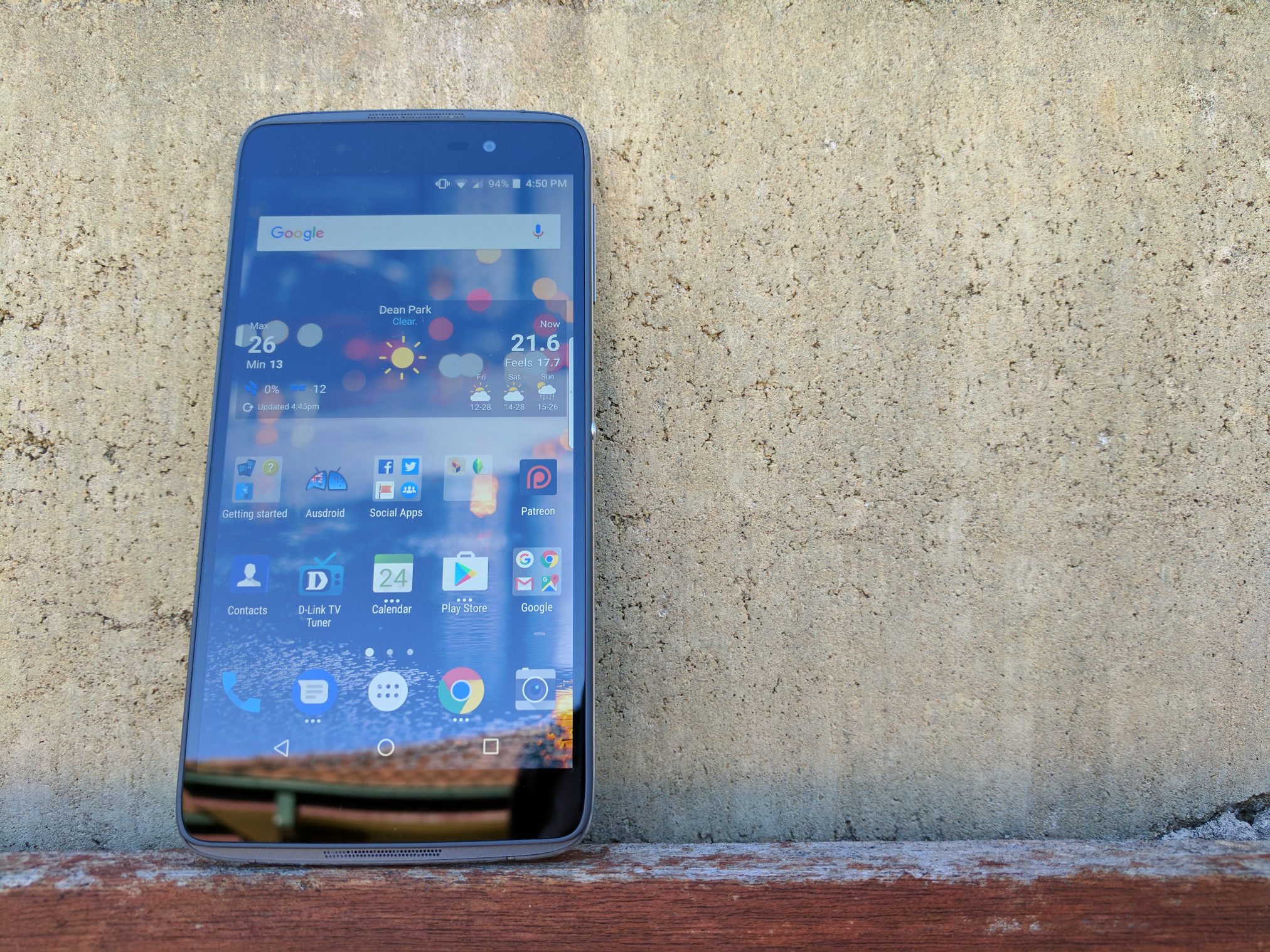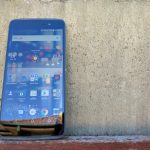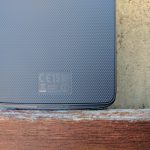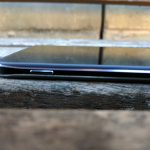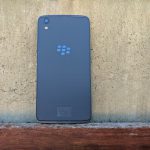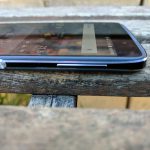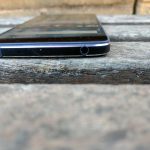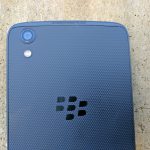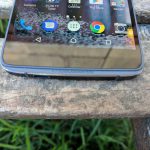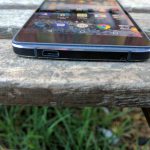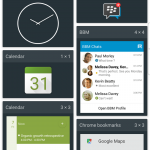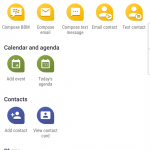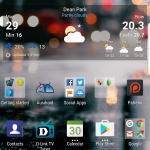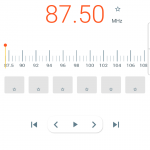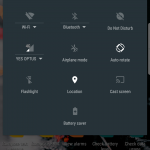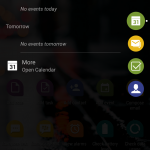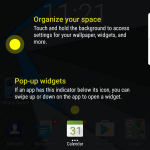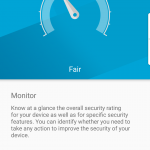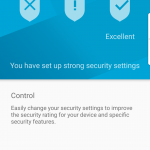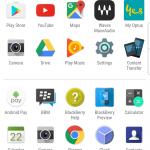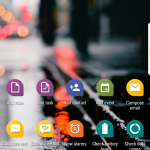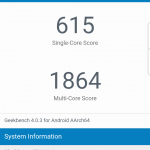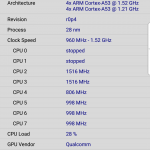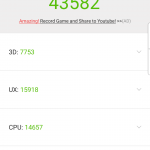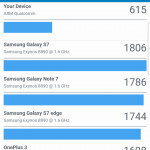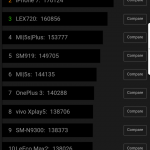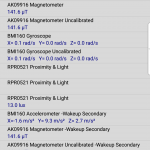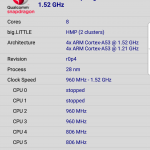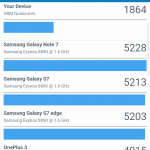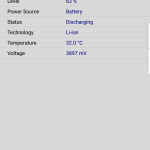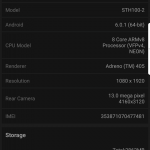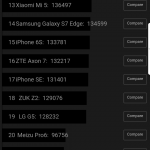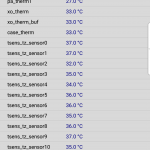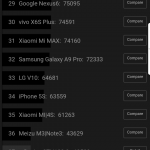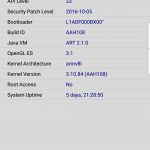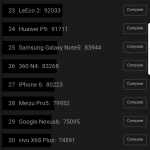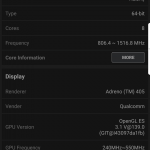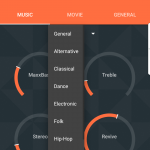When BlackBerry finally decided to eschew developing their own mobile OS and focus on devices running Android, it was something many people were excited about. The decision got the tech industry talking, theorising that this move could be the company’s salvation, scaling down any financial losses and bringing them back to an era of profitability.
Fast forward to November 2015 when the company released the BlackBerry Priv, and after I reviewed it a bit later in 2016, I was impressed with the hardware and software despite a few small issues. The Priv was, and remains, a very solid Android device.
In July this year, BlackBerry announced the DTEK50, a more budget conscious, mid tier Android powered smartphone. After using the Priv, I was excited at the prospect of seeing what Blackberry could do with a lower-end device, so we got our hands on the DTEK50. It’s now time to see how it compares to its higher end sibling and see if it can deliver as much bang for your hard earned dollar as they think it can.
BlackBerry DTEK50 Hardware / Build Quality
I’ll be honest with you here. I have read the multiple reviews of the DTEK50 from overseas in which most reviewers appeared to be disappointed with the device, with each review seemingly running from bad to worse. However, I did go in this review with an open mind, willing to give Blackberry the benefit of the doubt after the almost-stellar Priv I reviewed earlier.
It’s pertinent to note that while the phone is called the Blackberry DTEK50, the phone was manufactured by, and from the very look of the phone has been heavily influenced by TCL, better known as Alcatel.
To create the DTEK50, Alcatel has seemingly modified an Idol 4 handset with a few differences, though the core device, including most of the specs and design remains mostly the same. There are some differences, the rubberised rear of the phone for one, which in my opinion have been changed for the better, and the phone still has that little bit of Blackberry-ness to it that defines it as a Blackberry handset.
At first glance, the DTEK50 looks quite good if not impressive. I’m not ashamed to admit that there were a couple of moments of delight when first pulling it out of the box. The phone seems to have the feel of close to enough high end quality on a budget that people are looking at in a phone such as this.
The DTEK50 seems to be made of two smaller wedges merged with a bigger Metal frame to make it like a sandwich. It sounds weird but as you can see here in the pictures of the DTEK50 that’s almost exactly what it is.
On the front of the phone Blackberry has stuck a front/rear speaker grill with the front glass screen wedged on top surrounded by a rubberised side. From there on the left hand side we have a white, clear LED light which flashes to let you know you have a notification from any app that is set to give you notifications. The 5MP front facing camera is also here which I will be going into further detail later on down in the review.
Of course the 5.2” IPS LED Display is the main focus of attention on the front of the DTEK50, the screen is both beautiful to view and use. Below the display at the bottom of the device we also have additional front/rear speakers which again are surprisingly good – but we’ll get to the speakers soon.
The right hand side of the DTEK50 houses a volume rocker and where other phones put the power button, in the middle Blackberry has included a circular metallic button known as the ‘Convenience Key’, a key that can be somewhat customised in settings – but more on that later. Just below the Convenience Key we have the combined Nano SIM/MicroSD card slot, accessible with a SIM tool.
The base of the phone is where you find the usual microphone and an off-centre microUSB port – it was a little disappointing to not get USB-C but as Blackberry are moving on from hardware it’s unsurprising to see them stick with a known quantity.
With the Convenience Key and Volume rocker on the right, Blackberry has placed the Power button on the left hand side of the phone, a setup which did at times cause a bit of grief as I am used to the volume rocker being on this side with the power/standby button on the other side normally. It’s a personal preference thing on button placement, but muscle memory can easily be retrained, so it shouldn’t matter after a while.
The top of the DTEK50 features a headphone jack (Yes, this is apparently a feature now) and a secondary Mic for noise cancellation..
Flipping over to the back of the BlackBerry DTEK50, we find a rubberised material which does allow for quite a good grip and I certainly do like. The rear is where you also find the 13MP rear facing camera with an white clear LED flashlight just underneath the camera.
Holding the device in one hand is quite easy and comfortable thanks in part to the rubberised rear of the DTEK50. It is also incredibly lightweight feeling in the hand compared to say either my spare Galaxy Note 5 or the Pixel XL. Even using the DTEK50 one handed is not is daring as it does feel on say either the Note 5 or Pixel XL and that’s a good thing at the end of the day.
For display purposes, I would have prefered if BlackBerry and TCL had opted for a slightly bigger screen which ultimately would have meant most likely a change in the design and body upon which the DTEK50 is founded and built upon.
Certainly my preference especially with this hitting for the bargain BYOD/corporate end device where emails are being sent in massive amounts of flurry and having such a small screen does impact the ability to in some cases, the ability to see emails clearly or not sure what has been quoted. A 5.5” would have sufficed to say the least.
What’s inside
| Key Specifications: | BlackBerry DTEK50 |
|---|---|
| Release date | August 2016 |
| Screen size | 5.2-inch |
| Screen technology | LCD |
| Resolution | 1,920 x 1,080 |
| PPI | 424 |
| Rear camera | 13MP |
| Front camera | 8MP |
| Chipset | Snapdragon 617 |
| Core config | 4 x 1.5 GHz + 4 x 1.2 GHz |
| RAM | 3GB |
| Storage | 16GB |
| MicroSD | Yes, up to 2TB |
| Battery | 2,610 mAh |
| Battery removable | — |
| Connector | MicroUSB |
| Headphone Port | Yes |
| Headphone Location | Top |
| Speaker Configuration | Front |
| NFC | Yes |
| Android OS | Android 6.0 |
| Vendor skin | BlackBerry Stock |
| Dimensions | 147 x 72.5 x 7.4 mm |
| Weight | 135g |
| Colours | Black |
BlackBerry DTEK50 Camera
The DTEK50 has a camera which for me honestly, performed above expectation, which given the market this is aimed at, and BlackBerry´s past history with cameras has been, well, very much a work in progress. For example, the Priv’s camera was great to use but the software side lacked further ability to support manual controls and was pretty basic to say the least.
What the DTEK50, this has changed and for the better, as the device offers for its rear facing camera a 13MP rear camera offering a f/2.0 aperture lens and a phase-detection autofocus system, whereas
Looking at the photo’s on my computer for this review I can easily say that they do seem quite good actually. There is a lot of colour which is vibrant and bright but also the photo’s contained little noise or wash out.
However, sadly though in low-light, the rear camera does struggle with pictures being grainy and soft edges everywhere even once the camera makes the automatic adjustments.
The front facing 8MP camera is ok and if the lighting is somewhat surprisingly good to use. It would be pretty accurate to say that it’s an awesome selfie camera. However there is one big issue here – low light – which is its achilles heel so to speak.
In low light, the front camera tries its best to get a clear shot but with a couple of the selfie’s I took, there was a washout of colour on my face. Furthermore, the front notification LED also acts a front flash and by the evidential corresponding photo shows just how dark it is but also how washed out my face is and the associated noise within the picture just makes it a bit unbearable. As backup for the front notification LED, the screen also lights up acting as a camera light.
While this might make sense to have a back up, I am not a fan of front facing flashlights as I find them to be utterly useless unless backed up by your normal lighting at home be it natural or electrical or if you have brought along a third-party camera light. Those aftermarket flashlights are quite good and are generally better than a typical LED smartphone flashlight – lets be honest, they’re utter BS!
I would certainly recommend if you need to take selfies in low light, please don’t use the front flashlight, but instead get an aftermarket one instead.
Photo samples
BlackBerry DTEK50 Software
The DTEK50 comes with Android 6.0.1 (Marshmallow), but as we’ve seen with the Priv, Blackberry are fast with their updates and during the review I received a security patch – though Nougat plans haven’t been announced – We’ve asked BlackBerry Australia but they’re keeping quiet for now.
DTEK isn’t just a name, it’s also the security software suite BlackBerry pre-install on their phones, including the Priv. DTEK is basically like antivirus software monitoring your phone usage to the point where it will inform you when issues have been found with either apps, downloaded material including files, movies, music etc. What DTEK does is to ensure the device is kept safe software wise from any potential and normal threats that are out there.
This for me is the main feature for the DTEK50 and essentially for any Android powered BlackBerry device. DTEK is one of few meaningful additions that Blackberry have made to the phone beyond the mostly stock Android software. It’s something all the other OEM’s should look at doing with their devices in my honest opinion.
BlackBerry DTEK50 Performance and Battery
Performance wise, the DTEK50 comes with a octa-core Qualcomm Snapdragon 617 (4×1.5GHz /4×1.2GHz) with 3GB RAM, and it’s with this combination of the CPU & RAM hardware that helps the DTEK50 chug along quite well.
That being said, there did seem to be some issues with heat and performance. While the DTEK50 can handle multitasking between apps and services throughout the day normally, I did notice that during the extreme heat we had here recently in Sydney, the DTEK50 would stutter and at least take its time in thinking and this could be just put down to the heatwave.
Another thing is that intense graphical games tend to grind the DTEK50 akmost to a halt, I found the screen stuttering quite a bit. Games like Asphalt 8, FiFA 16 Football and GTA San Andreas which play nicely on higher specced processors.
Running the device through the AnTuTu benchmark app service, the DTEK50 received a score of 41,631 whilst with the Geekbench mark app, the DTEK50 also received a score of 1,978 through its multi core test.
Overall I have to say on the performance, whilst it was a little mixed, it could be a whole lot worse for the price, but overall if you’re looking for a phone not a mobile 3D gaming platform then the DTEK50 will do pretty well.
Battery life/usage
After extended use of the DTEK50, I have to say that battery life is definitely a bit of a let down.
I found that if I took the DTEK50 off charge say at about 8:30 in the morning, towards the afternoon I would have about 25-20% around 4 pm-ish if I didn’t charge it at all and that’s with just medium usage given I would check emails and chat to friends either via text or through various messaging apps (namely facebook messenger). I do have a liking for Pokemon Go, a known battery hog, so that could explain the poor battery life on occasion.
There are settings within the DTEK50 to help save the battery and I did try my best to play with those settings to see if I could get more extra juice. Sadly to say it really only helped in the best case scenario, I got an extra 5-10% extra life at best.
I think we can safely say that maybe a bigger battery could have been better utilised in the phone but the downside could be the additional cost, as well as additional size of the device that would be required and then most likely passed on to the consumer at the end of the day.
BlackBerry DTEK50 Sound
One of the bigger surprises with the DTEK50, as it has both top and bottom front facing speakers which can also play on the rear/back of the DTEK50 and I have to say these tiny little speakers provide some amazing audio. I absolutely loved them when viewing movies or YouTube videos in bed movies.
With the Priv the sound seemed tacked on as an afterthought, it worked but it wasn’t a focus for them and it showed. However with the DTEK50, this focus has changed, and for the better I say.
The DTEK50 also comes with Waves’ MaxxAudio tuner, but the sound that it produces may produce some interesting results. For example I found depending on the song, the app would make songs sound different to what I knew they were and sometimes this was good but others it was like – ok that doesn’t sound right at all.
BlackBerry DTEK50 Connectivity
The DTEK50 comes with dual band WiFi 802.11 a/b/g/n/ac and when connected to my home WiFi network the connection was very strong, which is something I would have expected from BlackBerry.
Unlike some other mid-range phones on the market the DTEK50 comes with NFC which means you can use services like Android Pay, Sydney’s Opal Travel app along with other NFC services – a welcome surprise.
My DTEK50 review unit is an ‘International Version’ so I wanted to touch on the network connectivity within our 3 major telco’s here in Australia. Below is a table of what the DTEK50 can support based on the 3 major telco’s bands:
| Band | DTEK50 | Optus | Vodafone | Telstra |
|---|---|---|---|---|
| 2G | 850MHz 900MHz 1800MHz 1900MHz |
900MHz (Closing 1st April 2017) |
900MHz (Closing 30th September 2017) |
CLOSED |
| 3G | 850MHz 900MHz 1900MHz 2100 MHz |
900MHz 2100MHz | 850MHz 900MHz 2100MHz |
850MHz 2100MHz |
| 4G | 2100MHz 1900MHz 1800MHz 2600MHz 900MHz 800MHz 700MHz 2600MHz 2300MHz 2500MHz |
700MHz 1800MHz 2100MHz 2300MHz 2600MHz |
850MHz 1800MHz |
700MHz 900MHz 1800MHz 2100MHz 2600MHz |
Whilst it´s easy to see that the DTEK50 is best suited for usage on either the Optus or Telstra networks, Vodafone does connect, however only on the 1800MHz band so there may be some issues in certain areas. You can find a list of MVNO’s that use either the Telstra, Optus or Vodafone networks here.
BlackBerry DTEK50 Conclusion
With only a few minor issues, the DTEK50 is a pretty good phone. Yes the battery isn’t as good as it could be, there’s some niggles in the software but it’s a good phone.
There’s always a point in these reviews where you have to ask yourself if you’d recommend the phone and for me the answer is yes.
Why?
Well I loved the Priv, but at the time the steep price (AUD$900+) pushed it out of reach for anyone not looking for a flagship phone. The DTEK50 on the other hand, with its more affordable price tag, could be a device both consumers, SMB’s and even Blackberry’s bread and butter: corporate companies can look at, a decent handset with a great security package.
The only other concern I share with what fellow writer, Duncan wrote how BlackBerry no longer making devices, instead licensing the use of their name, could lead to the BlackBerry brand being possibly removed altogether down the track and for me that is a major concern because BlackBerry can make great devices, they just need to spend more time refining their products but also spending on a bigger sales budget.
Let’s be honest, that’s where BlackBerry isn’t alone in not properly marketing their devices to us consumers and hopefully that may change under the ownership of TCL but I do have doubts.
The DTEK50 review was made possible by the guys over at Expansys Australia. They currently have the DTEK50 priced at $394.99 + Delivery
However, as a comparison price, BuyMobile Australia has the DTEK50 listed at $419.95 + Delivery.
Disclosure Statement
Alex purchased the review device from Blackberry after writing this review.

